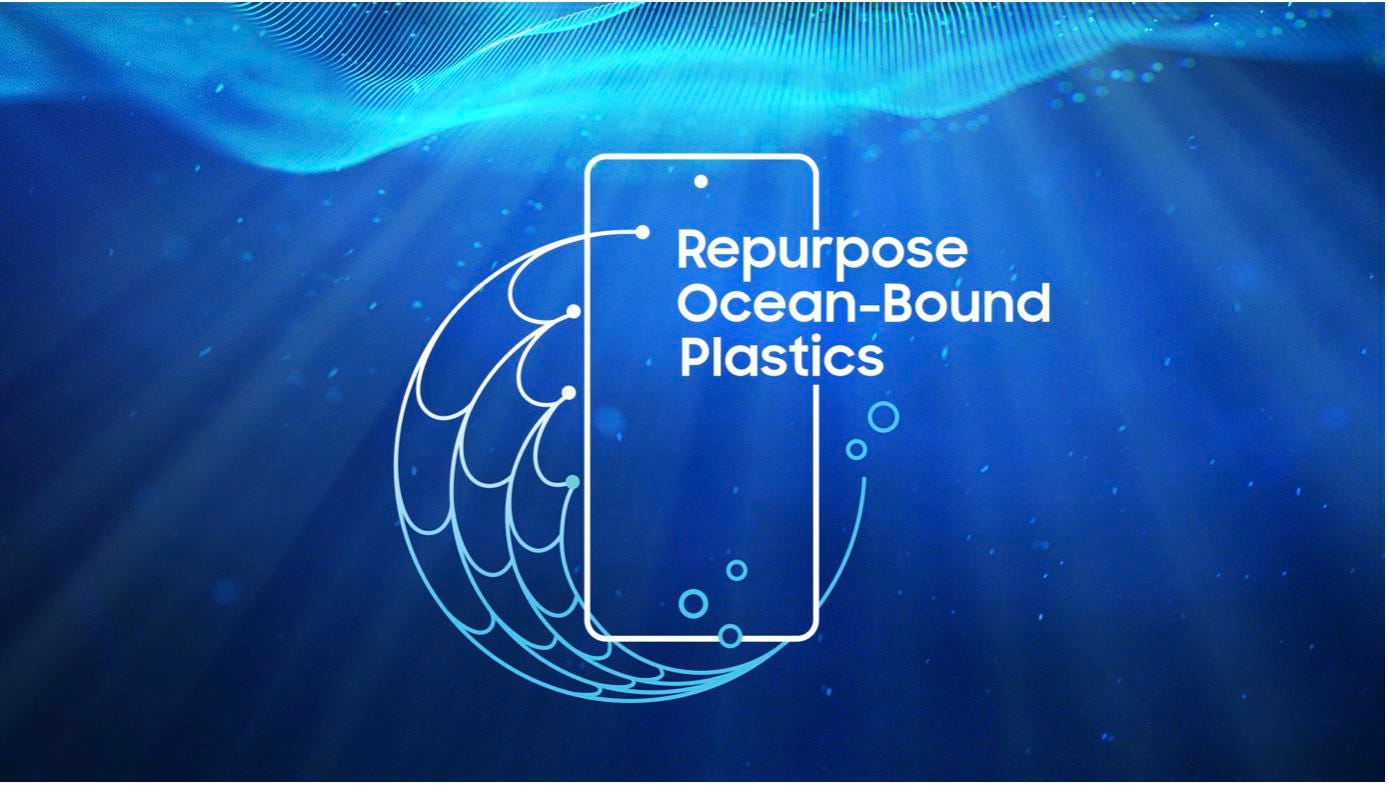
Samsung is repurposing ocean-bound plastics into Galaxy S22 and beyond
In August 2021, Samsung announced Galaxy for the Planet, a sustainability platform that has an initial set of targets aiming at reducing the environmental footprint and lessening resource depletion from production to disposal of its Galaxy products by 2025. Among the goals:
- Incorporate recycled material in all new mobile products
- Eliminate all plastics in mobile packaging
- Reduce the standby power consumption of all smartphone chargers to below 0.005
- Achieve zero waste to landfill.
As part of the effort to incorporate recycled material in the newly launched Galaxy S22 family, Samsung developed a new material made with repurposed ocean-bound discarded fishing nets.
According to the World Wide Fund for Nature (WWF), between 500,000 to 1 million tons of fishing gear are discarded or lost in the ocean every year. Approximately 46% of the 79 thousand tons of ocean plastic in the Great Pacific Garbage Patch is made up of fishing nets, some as large as football fields, according to the study published in March 2018 in Scientific Reports. The researcher themselves were shocked by this number as they expected the percentage to be closer to 20%. Fishing nets lost, abandoned or discarded at sea – also known as “ghost nets” – have a devastating and long-term impact on marine life. An estimated 30% of the decline in some fish populations results from discarded fishing equipment, while more than 70% of marine animal entanglements involve abandoned plastic fishing nets.
Using recycled plastic in the manufacturing process helps mitigate the problem of ever-growing plastic waste. However, the challenge with recycled materials is that they have degraded properties from prior use and processing. This makes them less durable and more likely to crack, scratch, and discolor. Integrating recycled materials into a product such as a smartphone without compromising the degree of durability consumers have become accustomed to requires careful consideration.
Samsung has been researching recycled materials and related technologies for over ten years. The first step in this process was to figure out how to make recycled fishing nets plastic more durable. The fact that most fishing nets are made of nylon which is vulnerable to moisture and water absorption is at odds with the need for high-performance materials phones require to be waterproof and dustproof. Furthermore, nylon deteriorates significantly after being in seawater for an extended time, making it impossible to use the finishing nets without some processing. To get to a material suitable to be integrated into electronics devices, Samsung partnered first with a company that transforms collected fishing nets into polyamide resin pellets by further segregating, cutting, cleaning and extruding them. The consumer electronics giant then worked with another partner that builds polymer materials for various industries to upcycle and optimize the recycled polyamide resin pellets to meet the high standard of the Samsung’s products. The result is a high-performance eco-conscious plastic that underwent several testing iterations for mechanical and thermal stability and delivers a quality that is 99% equivalent to that of the plastic Samsung typically utilizes. The newly developed material containing 20% recycled ocean-bound discarded fishing nets was used in the Galaxy S 22 series key bracket and the inner cover of the S Pen.
MORE FOR YOU
This is the first step and Samsung is committing to expanding the use of ocean-bound plastic beyond the Galaxy S22 as the company goes on a journey to minimize the environmental impact of its product lifecycle by rethinking the resources used. It is easy to consider the small parts that in the Galaxy S22 will utilize these new eco-conscious materials and be critical of the effort. Yet aside from durability and reliability requirements, the reality is that using recycled material is also limited by consumers’ taste requiring bright color variants. “Color constraints largely dictated where we incorporated our new material. We know our users enjoy the wide range of color options the S-series provides, but the various color of fishing nets was challenging to recycle into specific, uniform colors for the devices. Therefore, we applied this material to the interior components where the color constraints become irrelevant. The material also acts as another internal barrier against dust and water, supporting the device’s resilience and durability.” told me Pranveer Singh Rathore, Engineer, Advanced CMF Lab, Samsung, in an email interview. Furthermore, we should look past how small the components using this new material are and instead, consider the volumes Samsung produces. The current use will divert more than 50 tons of discarded fishing nets from ending up in the oceans this 2022 alone.
Of course, this is not the only recycled material Samsung is using across its products. Other recycled plastic materials, such as post-consumer materials, also known as PCM, have been used across smartphones and accessories such as chargers and cases since 2013. Similar to the fishing nets instance, there is a process that takes discarded bottles and CD cases from their original form to smaller chips that are filtered into contamination-free uniform granules, which are then added to virgin plastic to create an eco-conscious material that in the Galaxy S22 is used for the inner part of the power and volume keys. Samsung also developed a new variant of this eco-conscious PCM plastic and integrated it into the speaker module of the Galaxy S22. The new material combines 20% recycled PCM with virgin plastic, glass fibers and other components to achieve the highest standards of durability and reliability required by such a critical part of the device. Using transparent bottles and CD cases helps with color variants which means materials using 20% PCM can be used in products exteriors, as it has been the case with the Galaxy Buds since 2019.
Talking about sustainability in the consumer electronic space is never simple. On the one hand, organizations are highlighting their efforts on minimizing the environmental impact they have and on the other, they continue to foster consumerism. Yet, more and more brands are taking tangible steps to do good for the environment while doing well financially. Ironically, in a world where we often see marketing before actions, Samsung is only starting to tell its story, but it has been taking actions for years.
Disclosure: The Heart of Tech is a research and consultancy firm that engages or has engaged in research, analysis, and advisory services with many technology companies, including those mentioned in this column. The author does not hold any equity positions with any company mentioned in this column.






